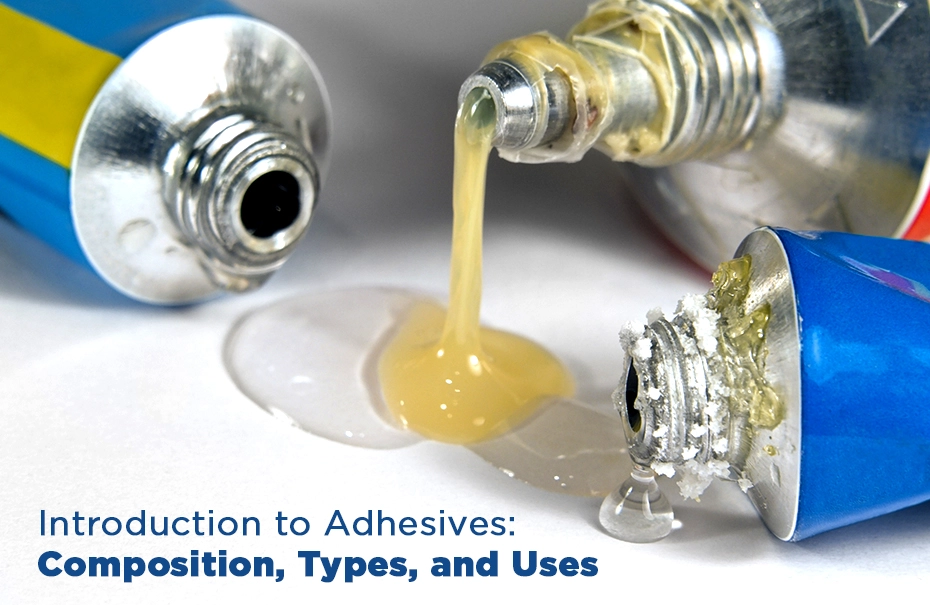
Post Preview
Key Takeaways
- Industrial adhesives empower diverse sectors with unmatched bonding flexibility and efficiency.
- Thorough research ensures the selection of the ideal adhesive for various materials and performance needs.
- Modern adhesive innovations drive sustainability, efficiency, and top-tier reliability in demanding environments.
- Correct application methods and attention to safety protocols are critical for peak adhesion and staff well-being.
- Understanding industry trends keeps organizations competitive and ready for rapid change.
Table of Contents
- Why Choose Industrial Adhesives?
- Types of Industrial Adhesives
- Matching Adhesive to Material
- Application Techniques for Better Bonding
- Sustainability and Green Adhesives
- Common Industry Use Cases
- Safety First in Industrial Adhesive Use
- Future Trends in Adhesives
- Conclusion
Why Choose Industrial Adhesives?
Modern manufacturing, construction, and assembly lines rely on industrial adhesives as a cornerstone for innovation and performance. Their ability to seamlessly bond dissimilar materials, streamline assembly, and eliminate the need for heavy mechanical fasteners makes adhesives a mainstay in nearly every sector. Industry leaders such as Leech Adhesives assist businesses worldwide by delivering versatile adhesive options that reduce costs and boost production efficiency.
From automotive plants replacing welds to electronics manufacturers using microweight bonds, adhesives have reshaped the landscape by enabling lightweight designs and corrosion prevention. Their practical advantages translate into cost savings, greater design flexibility, and improved aesthetics—contributing to their growth across demanding industries.
Types of Industrial Adhesives
- Epoxy adhesives: Renowned for exceptional strength and chemical resistance, they are often used in automotive and aerospace applications.
- Polyurethane adhesives: Offer flexibility, effective performance with varied substrates, and excellent shock absorption.
- Acrylic adhesives: Known for rapid curing, they are ideal for high-speed production where quick assembly is essential.
- Hot melt adhesives: Favored in packaging and woodwork, these adhesives set quickly and support high-volume operations.
The ideal adhesive depends on operating conditions, stress levels, material compatibility, and exposure to chemicals or moisture. Reliable information and a nuanced understanding of adhesive types help minimize errors and maximize long-term performance.
Matching Adhesive to Material
Success in adhesive bonding starts with a meticulous approach to matching product to substrate. For example, metals require different chemistries than plastics or composites, which may vary further depending on porosity or surface energy. Reference to technical datasheets and manufacturer guidelines ensures the best possible match, preventing common failures and minimizing rework costs.
Subtle details like surface texture, finish, and temperature stability are often overlooked but remain critical to achieving optimal strength. Evaluating these before adhesive selection bolsters initial performance and longevity within a given application.
Application Techniques for Better Bonding
Practical application involves much more than simply distributing adhesive between surfaces. Expert technicians know that meticulous surface preparation—such as degreasing, abrasion, or priming—can distinguish between strong and failed bonds. Advanced factories use automated dispensers and calibrators, enabling precise control over bond lines and curing cycles.
- Consult product-specific instructions for mixing and curing.
- Use quality equipment for repeatable results, including dispensing and measurement tools.
- Understand open times and environmental influences such as humidity and heat.
Proper application is essential for immediate bonding and ensuring lasting structural integrity, particularly in critical industries like aerospace or medical device manufacturing.
Sustainability and Green Adhesives
With industrial sustainability becoming a top priority, adhesive manufacturers are advancing rapidly toward water-based, bio-based, and solvent-free solutions. Companies are increasingly evaluated on their ability to reduce volatile organic compounds (VOCs) and embrace products with lower carbon footprints. Engineers must now weigh both performance and environmental impact when selecting adhesives—an increasingly feasible task as eco-friendly technologies evolve.
Organizations can consult studies such as those published by Adhesives & Sealants Industry Magazine to stay informed about sustainable trends and new bio-based adhesive technologies.
Common Industry Use Cases
- Automotive: Adhesives are pivotal in vehicle construction, replacing welds to lower vehicle weight and minimize corrosion while improving crash energy management.
- Electronics: Miniaturization demands precise bonding of delicate components, with adhesives such as epoxies and silicones preserving functionality in ever-shrinking packages.
- Construction: Structural adhesives set rapidly, enabling the efficient assembly of drywall, subflooring, and insulation that accelerates project timelines.
- Packaging: High-speed production lines depend on hot melt adhesives for seamless case and carton closure, optimizing output and product protection.
The right adhesive facilitates innovation, durability, and efficiency, underpinning numerous advanced products used daily worldwide. For more on adhesive breakthroughs in manufacturing, Chemical & Engineering News offers further insight.
Safety First in Industrial Adhesive Use
Industrial adhesives offer powerful benefits but require strict attention to safety protocols. If the adhesive’s safety data sheet dictates, always equip personnel with gloves, goggles, and respiratory protection. Maintain robust workplace ventilation, especially when working with products that emit fumes, and routinely conduct training to reinforce safety standards. Prioritizing safety ensures staff well-being and minimizes costly downtime from preventable incidents.
Future Trends in Adhesives
The next generation of adhesives is set to be more adaptive, sustainable, and intelligent than ever before. Developments on the horizon include adhesives that offer self-healing properties, environmental monitoring, or the ability to change performance characteristics in real time. As material science merges with digital technologies, advanced sensors are embedded directly in adhesive layers to alert users when a bond is compromised or nearing the end of its lifecycle.
Keeping pace with research, attending industry briefings, and collaborating with forward-thinking providers will ensure organizations can anticipate and integrate novel bonding solutions as soon as they are commercially available.
Conclusion
Industrial adhesives have transformed construction, manufacturing, electronics, and packaging foundations. Their effectiveness hinges on informed selection, precise application, and rigorous safety. Staying current with trends, sustainable practices, and new technologies is crucial in this ever-evolving industry. Whether the goal is to streamline processes, champion sustainability, or realize innovative designs, choosing the right adhesive drives progress at every level of enterprise.